Keioui Keijaun Thomas, No Longer Strange Fruit
May 13 – July 15, 2023
Opening: Saturday, May 13, 6-9pm
Performance: Saturday, July 15, 7pm
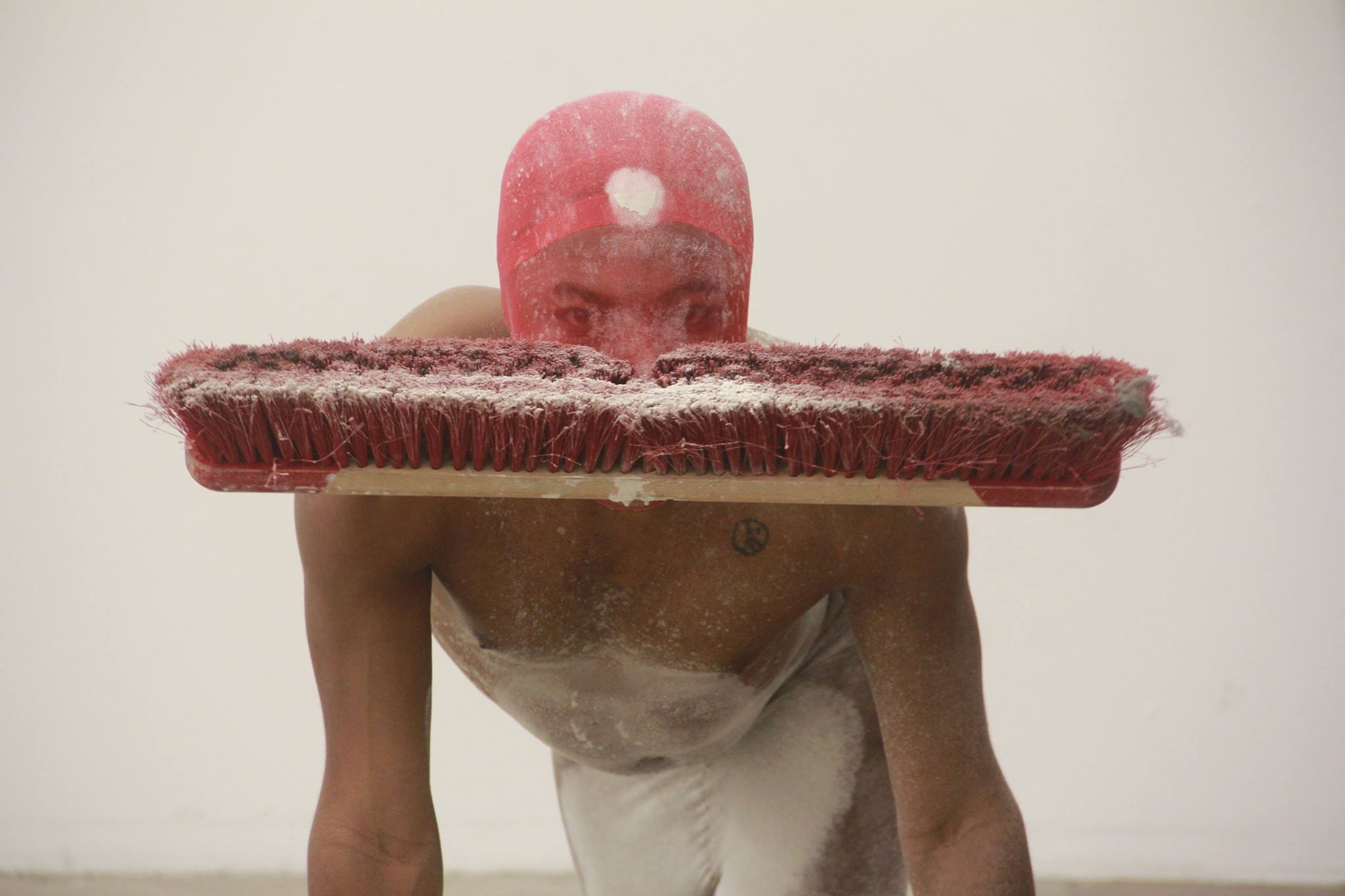
Keioui Keijaun Thomas, Partitions of Separation and Passing, Human Resources, Los Angeles, 2015.
Image courtesy of the artist. Photo by Hector Martinez.
JOAN presents a solo exhibition by New York-based artist Keioui Keijaun Thomas, the artist’s first institutional show in Los Angeles. No Longer Strange Fruit brings together a selection of Thomas’ projects from 2012-2022, emphasizing the multiplicity of ways in which the artist examines and engages with the entangled histories of labor, subjugation, and resistance. The multimedia exhibition includes video and sculptural installations, archival materials, and performance ephemera. Conceived in close collaboration with the artist, many in situ, these contributions build upon the artist’s interest in the affective, material, and economic conditions of Black identity formation and embodiment.
Combining the performative and archival, the exhibition presents fragments and traces of Thomas’ multi-year projects since 2012: Life Lessons, The Poetics of Trespassing, Distance is Not Separation, My Last American Dollar, and Come Hell or High Femmes,* along with research and studies for performances in the form of photo and video, and documentation. It highlights the various forms Thomas’ projects take—typically beginning in text, then translated to film, live performance, and installation. Displaying environments and objects that are recognizably associated with labor, ritual, and sites of collective gathering—including church pews, waiting rooms, locker rooms, salons, strip clubs, and the field—the exhibition explores the transformative possibilities of nightlife in dialogue with other forms of hospitality and care work.
The materials presented throughout the exhibition are functional and quotidian items. When placed together and altered for use in different ways, they construct a visual and sensorial language of resistance and celebration. Commodities and items like coffee grinds, honey, sugar, flour, glue, tape, brown paper bags, confetti, yarn, and hair meld together in the installation space. Thomas exploits the aesthetic properties of these utilitarian goods, using them in alternative performative ways that highlight the industrial processes and extractive economies behind their production and circulation, as well as our dependence on these commodities and affiliated forms of disposable labor. Materials like hair and nail polish reference the intimate and endurance-based caretaking work that is performed by Black women and femmes. Thomas sources many of these items locally, marking the ways in which installations offer records of both labor and fruition. Throughout, she centers the body as an enduring, shape-shifting, gifted, and powerful medium.
In bringing together various projects that span over a decade, No Longer Strange Fruit features the various overlapping points of interest throughout Thomas’ body of work, a layered set of experiments that deconstructs and reconstructs notions of Black visibility, hyper-visibility, passing, and trespassing. A common thread throughout the works is Thomas’ call for more equitable systems of sustaining community, founded on practices of collective healing. Thomas’ earlier projects—Life Lessons, The Poetics of Trespassing, Distance is Not Separation—explore notions of thingliness, procedural memory, and how Black bodies are used as disposable labor and domestic service. While Life Lessons investigates normative systems of masculinity and their subversion through the study of habitual and cognitive skills, The Poetics of Trespassing studies the histories, symbols, and images that construct notions of Black identity within Black personhood. In Distance is Not Separation, Thomas considers the Black femme body in relation to the athletic body, thinking about value, skills, and safety. The subsequent project—My Last American Dollar—centers the Black femme body, a talented and joyful body that is present at the party. (She is the party.) For this undertaking, Thomas engages the field as a place of communing, where people of color come together to honor arrival and togetherness, while also referencing the horrific and extractive histories of the Middle Passage. Lastly, the most recent project—Come Hell or High Femmes—builds on the earlier work to chart a speculative, post-apocalyptic geography, as the artist imagines a time when the “dolls”—a word loosely meaning trans women so flawless they are no longer considered real—have survived mass extinction. Thomas leans into new ways to heal in the lush American landscape by queering it and employing camouflage and metamorphosis as modes of survival and transcendence, channeling world-building in order to create safer safes for Black people and people of color. The work recognizes the interdependence of all beings for survival, and reclaims what it means to be Black in nature. Throughout this decade-long artistic journey, Thomas urges us to slow down, to listen, to pay attention to others, to practice collective care, and to celebrate.
Thomas’ creative working process also insists on care and intimacy. She intentionally does not have a website, and entrusts her personal archive only to those who will engage closely with her practice. For this project, the artist collaborated with JOAN through a series of conversations over a year to select, engage, and reimagine materials and ephemera from her digital and physical archive.
*Life Lessons: How to be a Man; The Poetics of Trespassing: Part 1. Absent Whiteness, Part 2. Looking While Seeing Through, Part 3. Sweet like Honey, Black like Syrup; Distance is Not Separation: Section 1. Selective Seeing: Corners, You, Section 2: Painted Images, Colored Symbols: She’s Hard, She Q; My Last American Dollar: Round 1. Tricking and Flipping Coins: Making Dollars Hit; Round 2. Black Angels in the Infield: Dripping Faggot Sweat; Round 3. Whatchu Gonna Do: Marvelous like Marva; Come Hell or High Femmes: Act 1. She From Flurda, but Some Call Ha Florida.
As part of No Longer Strange Fruit, Thomas presented a closing performance within the installation space on July 15th at 7pm.
Keioui Keijaun Thomas is a New York-based artist. She creates live performance and multimedia installations that address blackness outside of a codependent, binary structure of existence. Her performances combine rhapsodic layers of live and recorded voice, slipping between various modes of address, to explore the pleasures and pressures of dependency, care, and support. By centering self and communal care in real-time, Thomas’ practice aims to build bridges of understanding and community. Thomas has presented work both nationally and internationally at The Rhubarb Festival, Toronto (2023); Skopje Pride Queer Arts Festival, Skopje, Macedonia (2020); Dweller Festival, Brooklyn (2020); ANTI – Contemporary Art Festival, Kuopio, Finland (2019); Fierce Festival, Birmingham, UK (2019); Time-Based Art Festival, Portland (2016); Rapid Pulse Performance Art Festival, Chicago (2016); SPILL Festival of Performance, Ipswich, UK (2014); Out of Site Festival, Chicago (2014). Solo performances at The Knockdown Center, New York (2018), Harvard University, Cambridge (2018); Performance Space UK, Folkestone, UK (2016); Housing NY, Brooklyn (2016); and Human Resources, Los Angeles (2015). Select group exhibitions at Performance Space, New York (2019); Wrightwood 659, Chicago (2019); Arnolfini, Bristol, UK (2019); Artists Space, New York (2018); Station Museum of Contemporary Art, Houston (2018); New Museum of Contemporary Art, New York (2018); Human Resources, Los Angeles (2018); Broad Museum, Los Angeles (2017); New Normal, Istanbul and Beirut (2017); Encuentro 2016, Santiago (2016); Centro Cultural del México Contemporáneo, Mexico City (2016); EXPO Chicago, Chicago (2015); Théâtre de la Ville, Paris (2015). Solo exhibitions include Come Hell or High Femmes, Wexner Center for the Arts, Ohio (2022); and Hands Up, Ass Out, Participant Inc., New York (2021). Thomas is a 2022 recipient of the MAP Fund, the inaugural winner of the Queer|Art 2020 Illuminations Grant for Black Trans Women Visual Artists, and the Franklin Furnace Fund Recipient for 2018. She earned her Masters degree from the School of the Art Institute of Chicago and her BFA with Honors from the School of Visual Arts in New York.
Exhibition graphic design by Ella Gold.
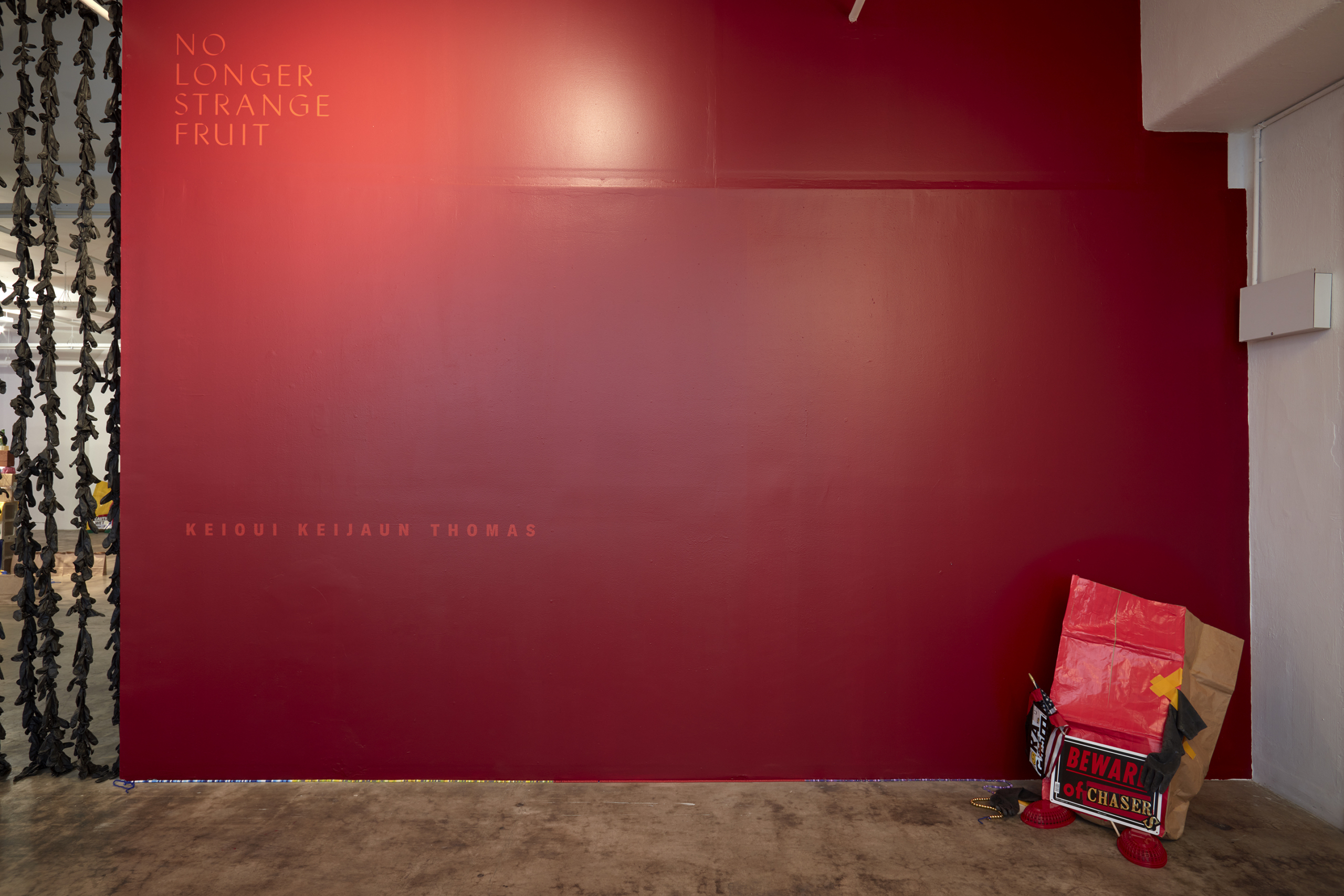

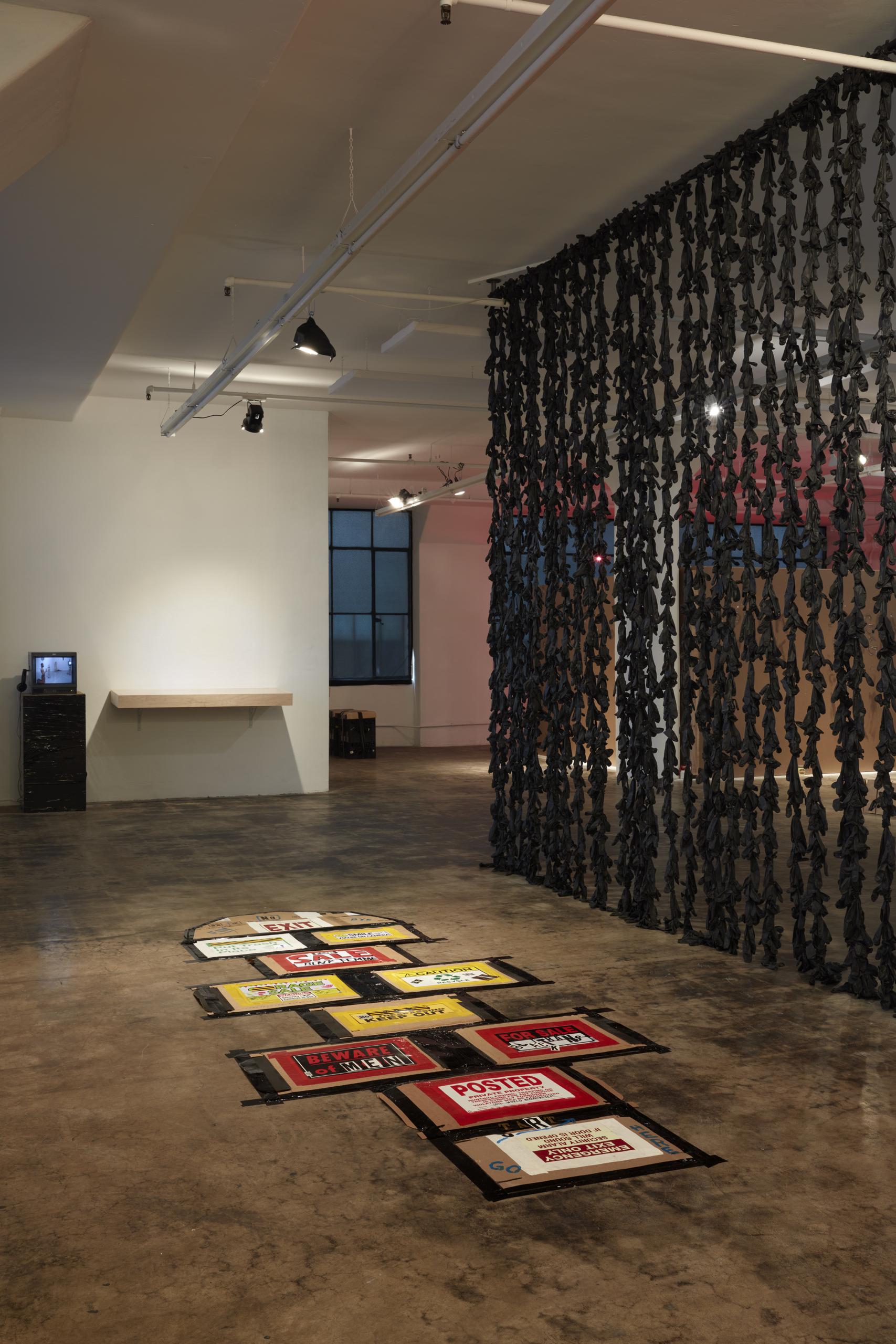
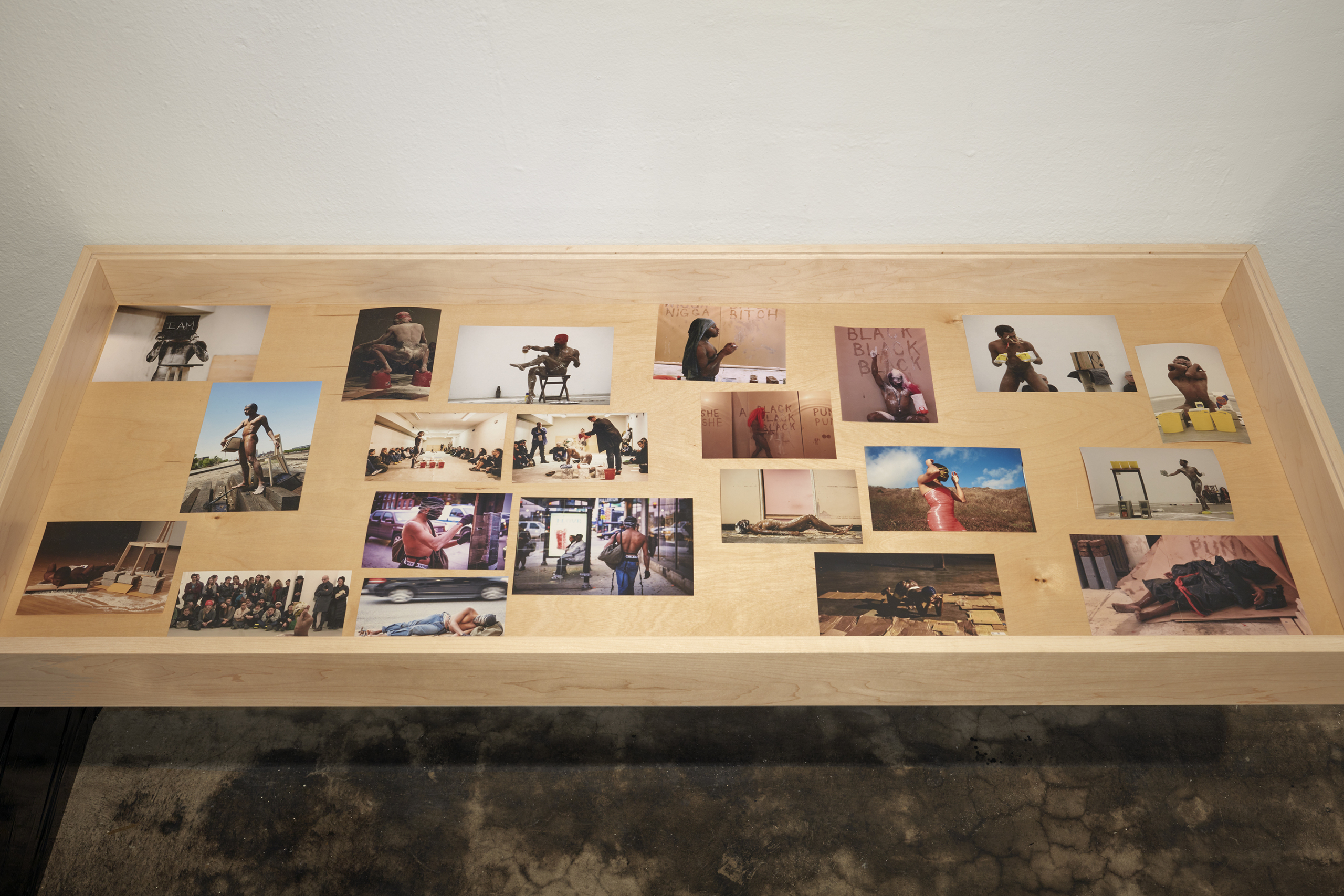
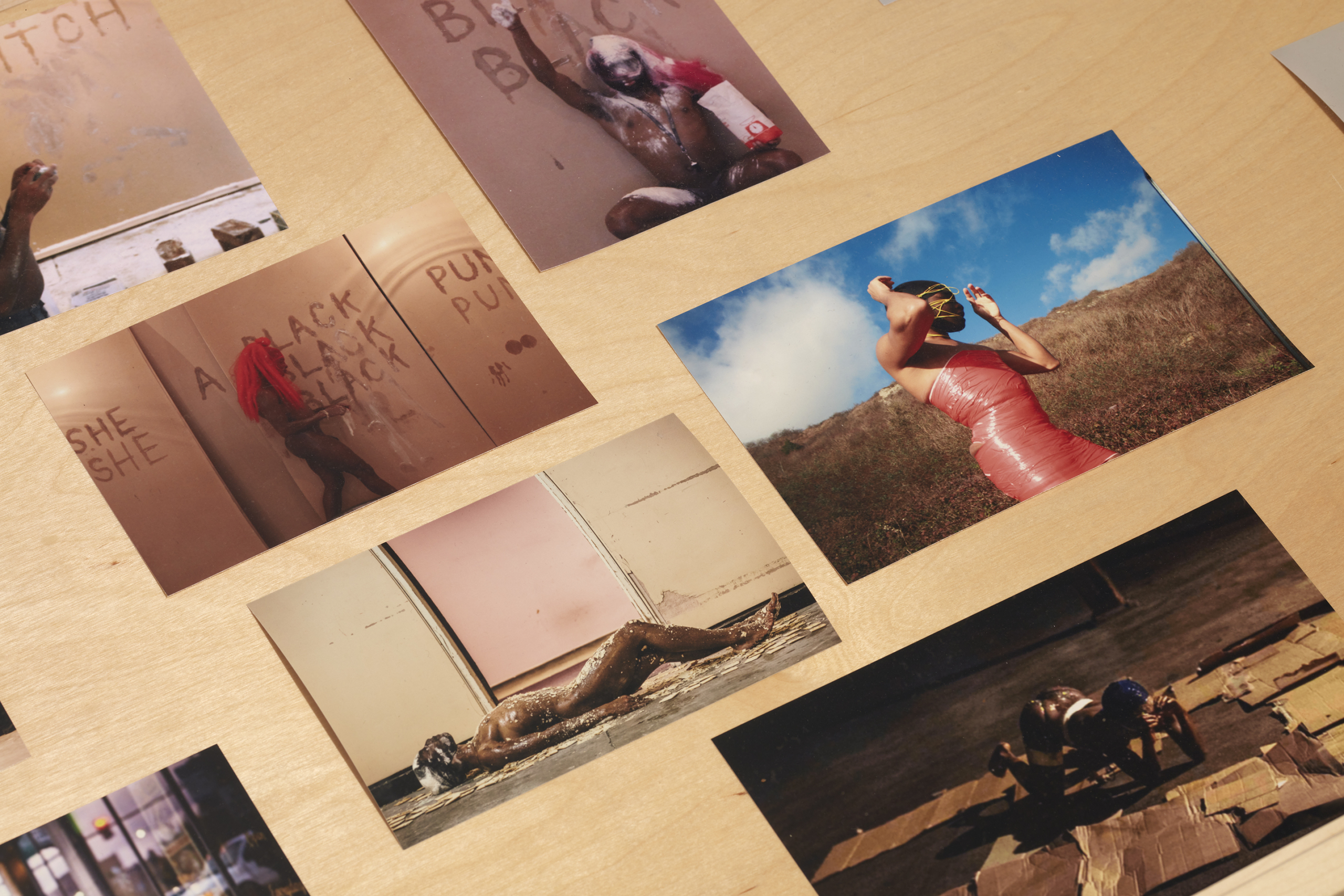
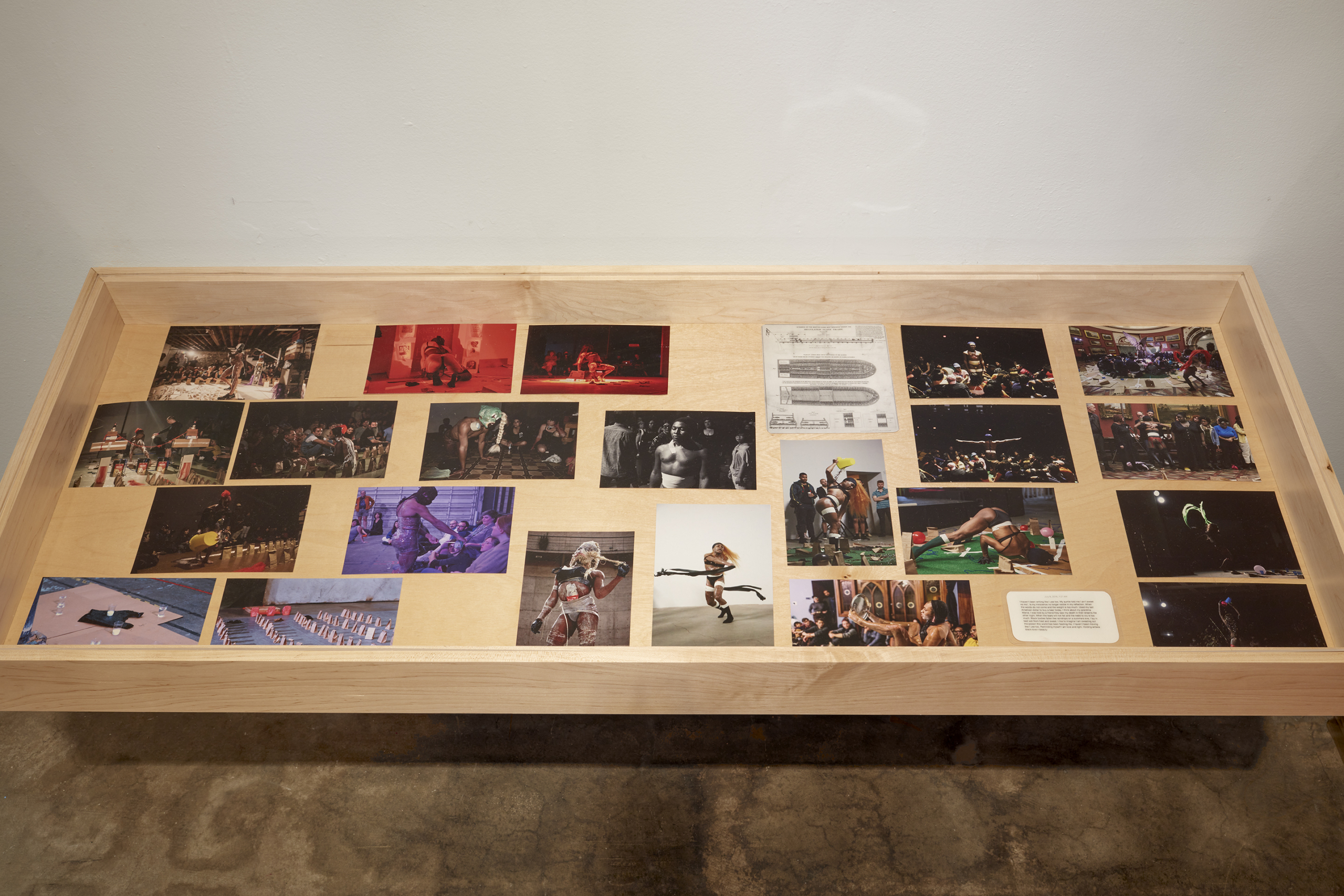
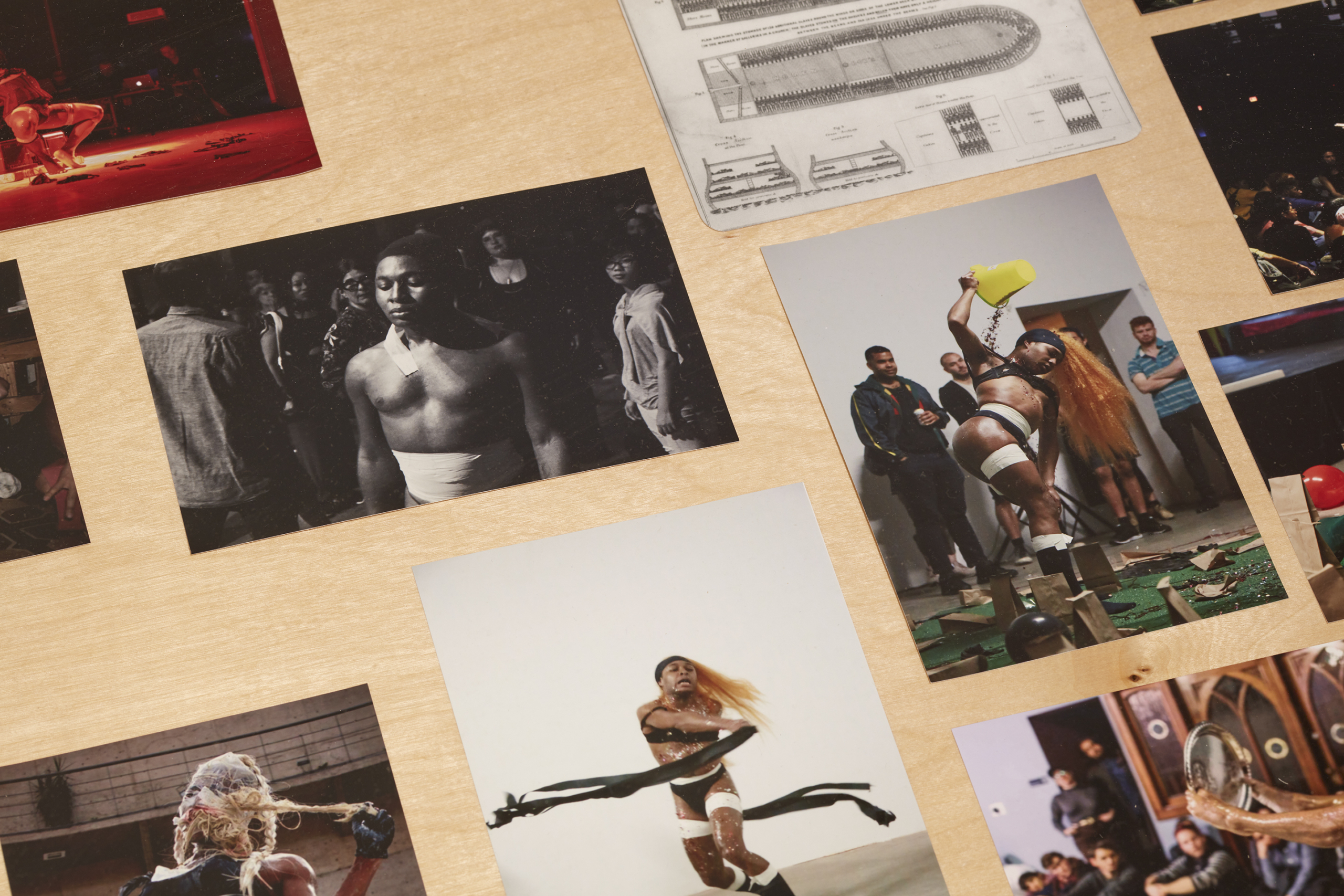
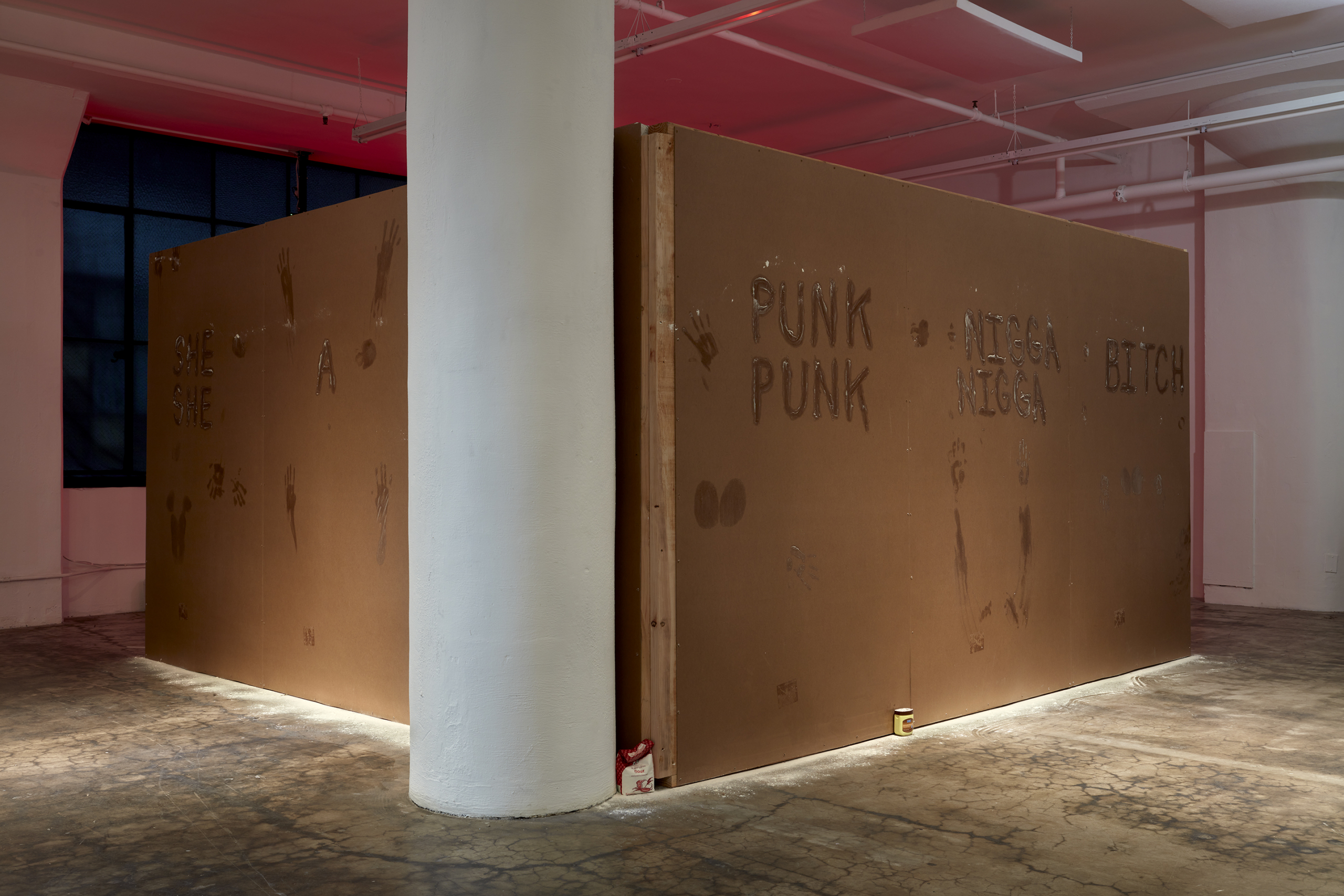
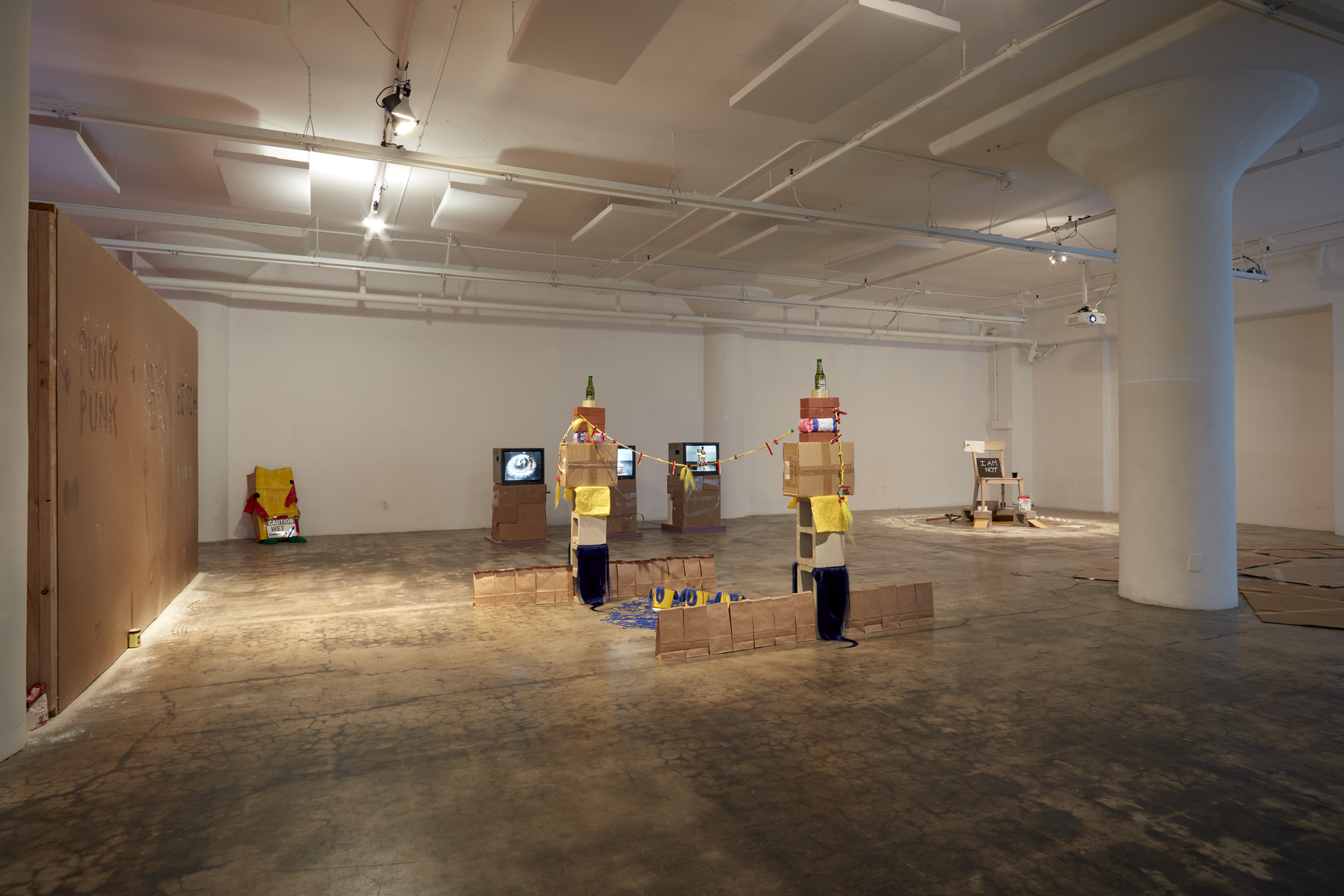
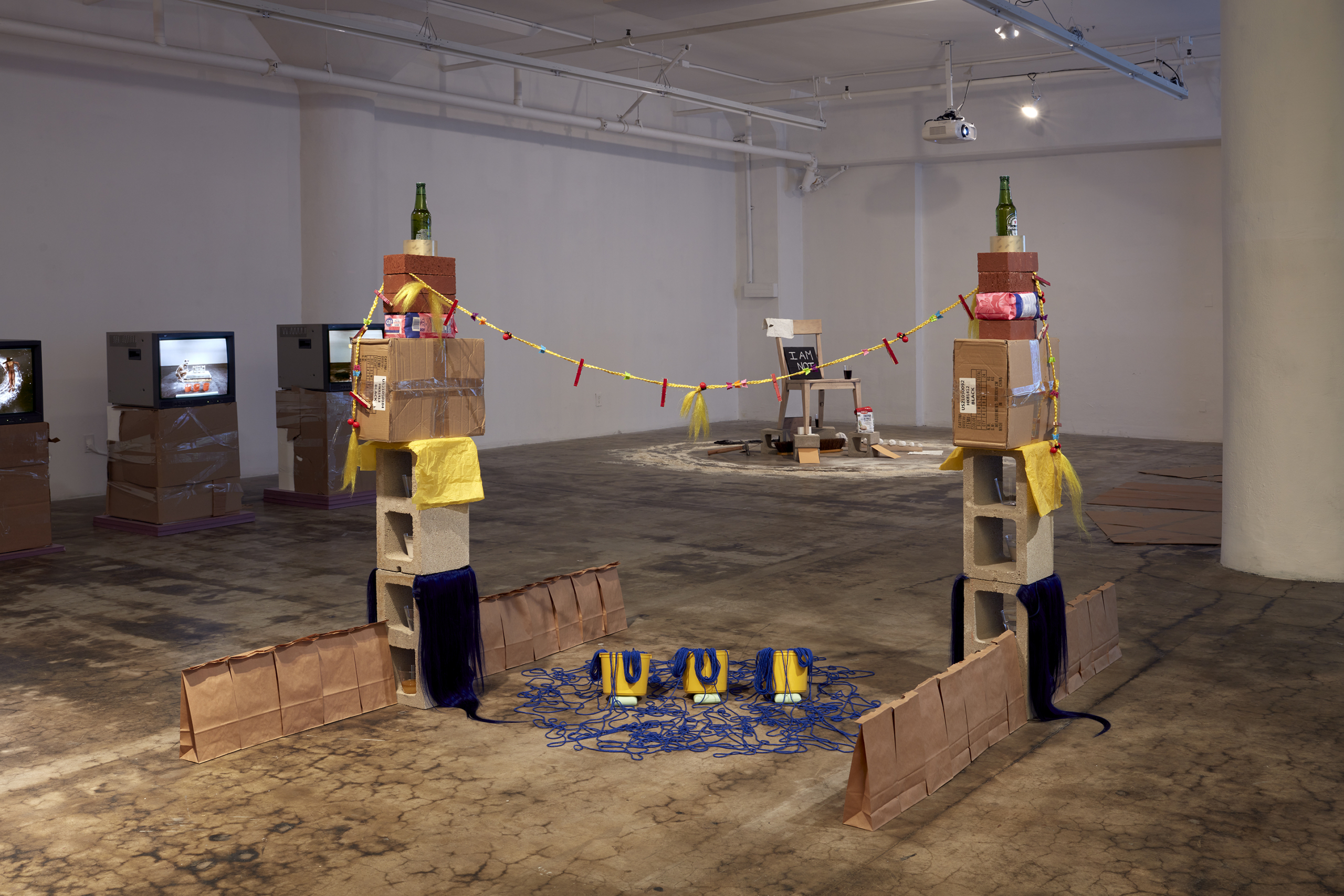
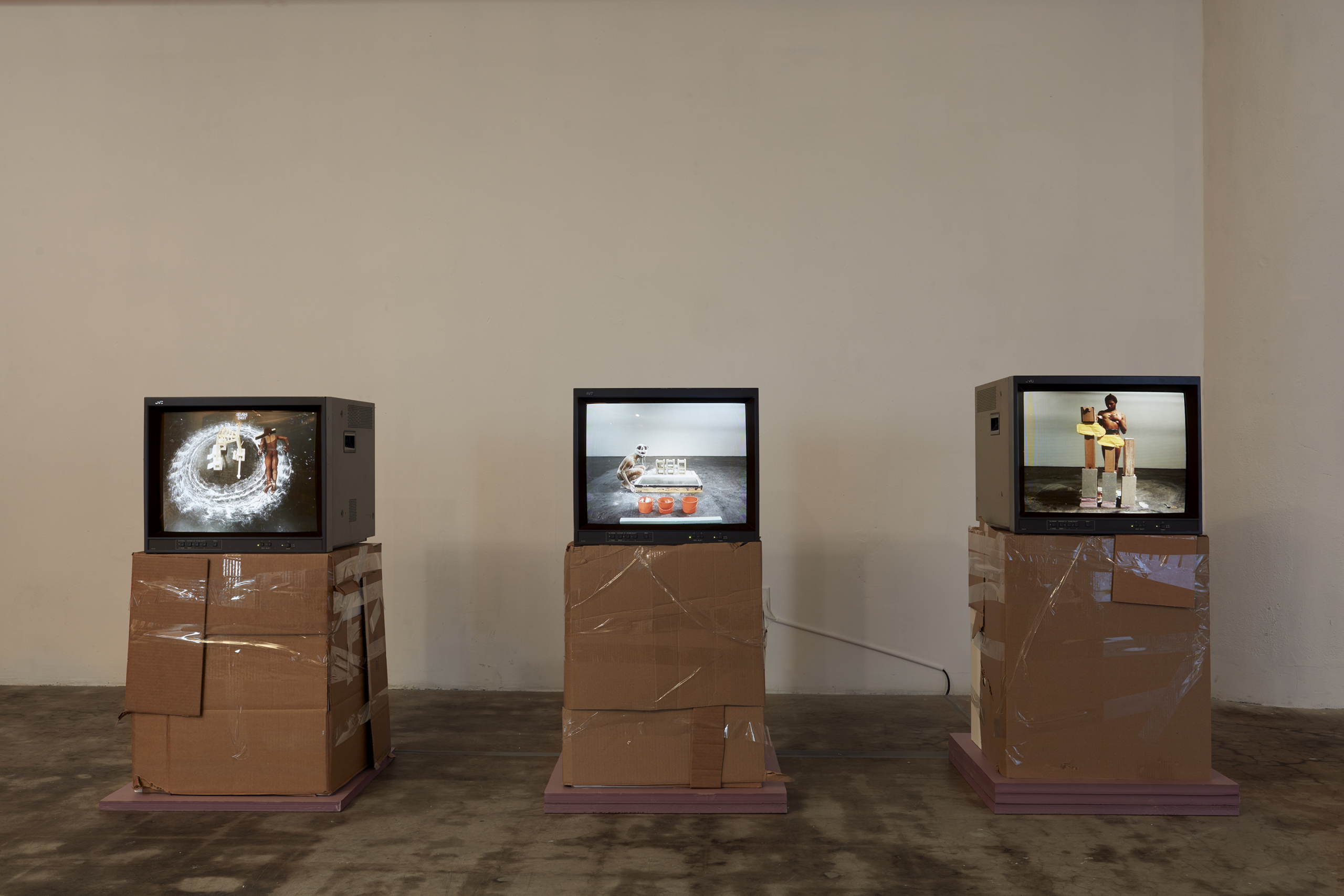
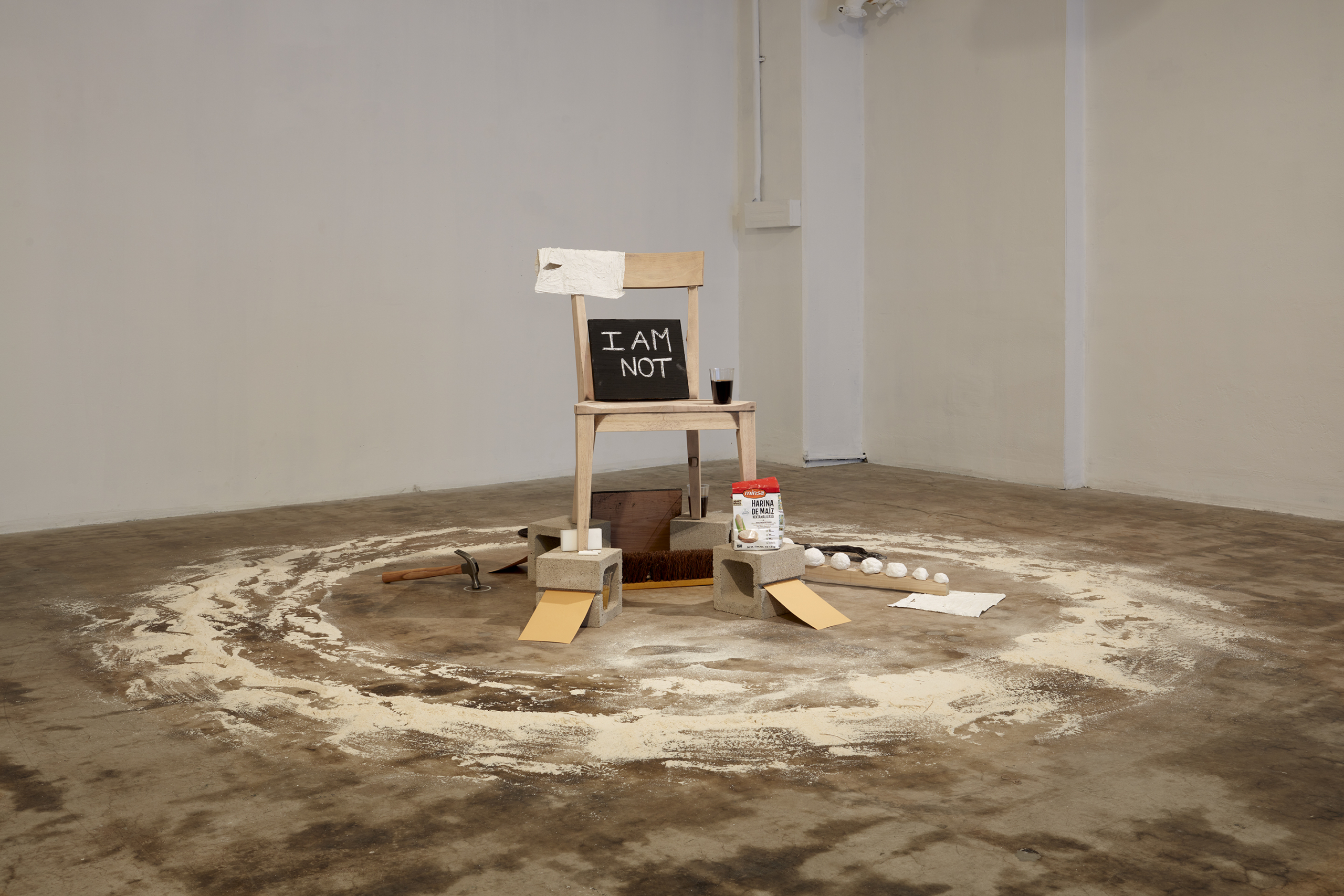

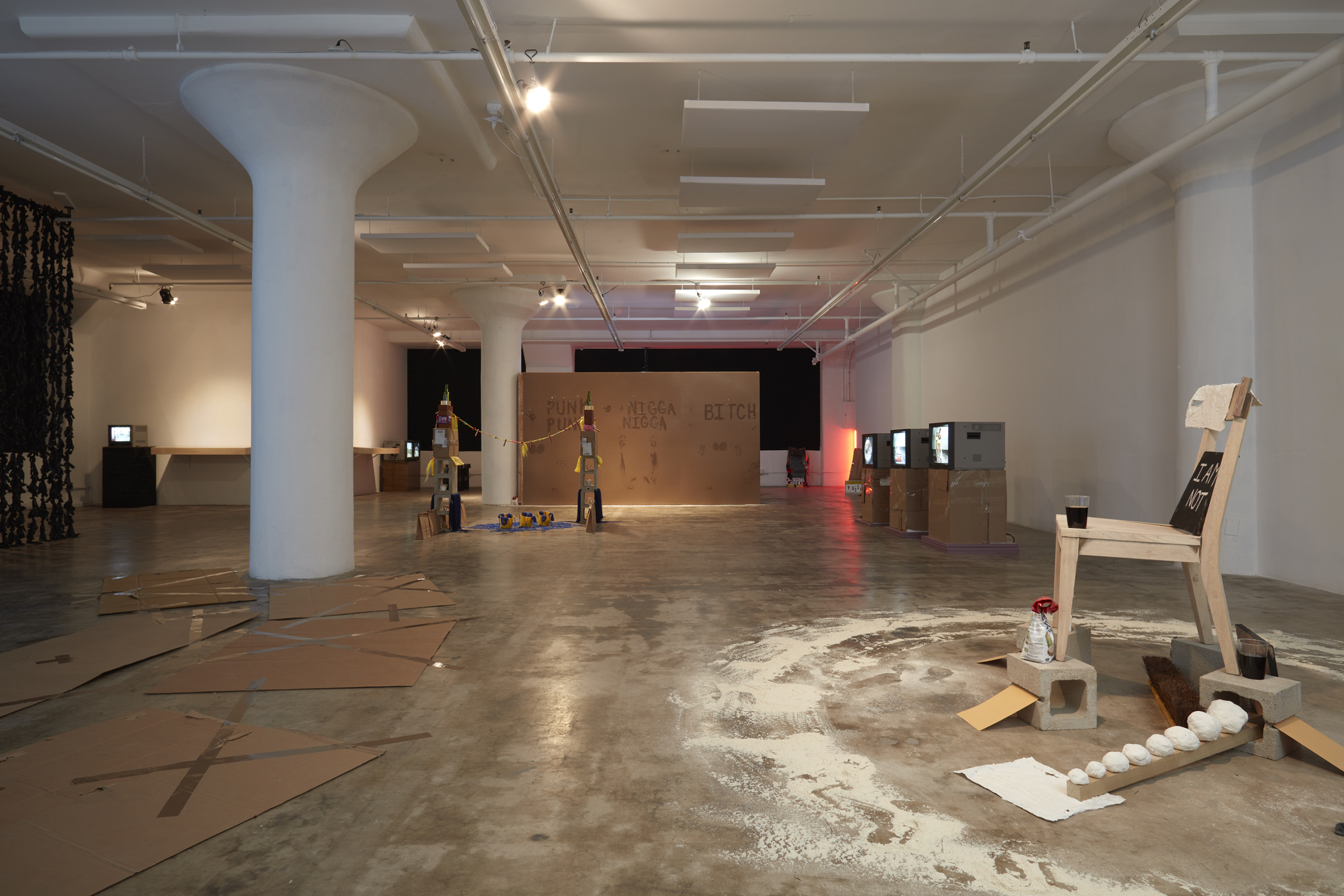
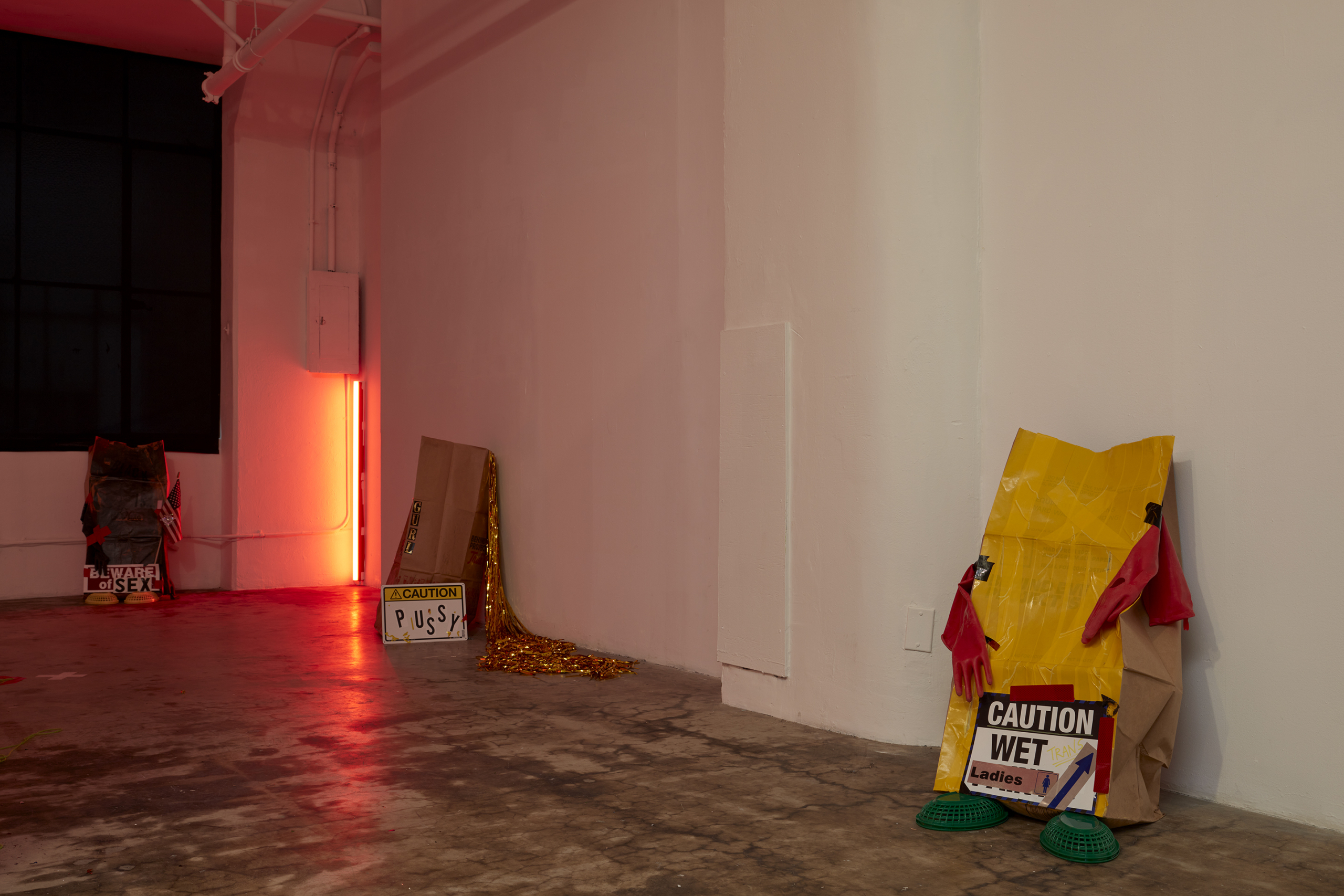
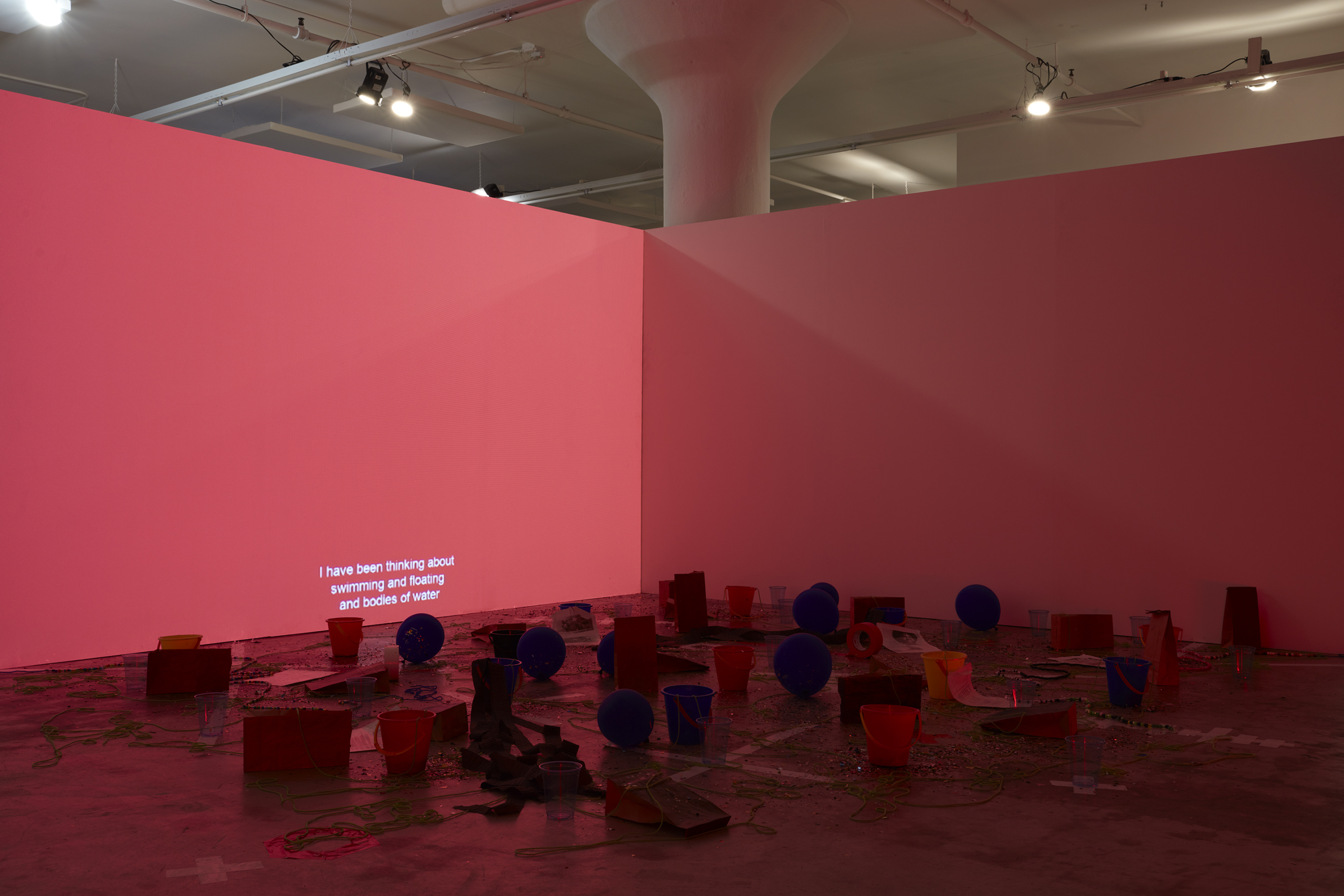
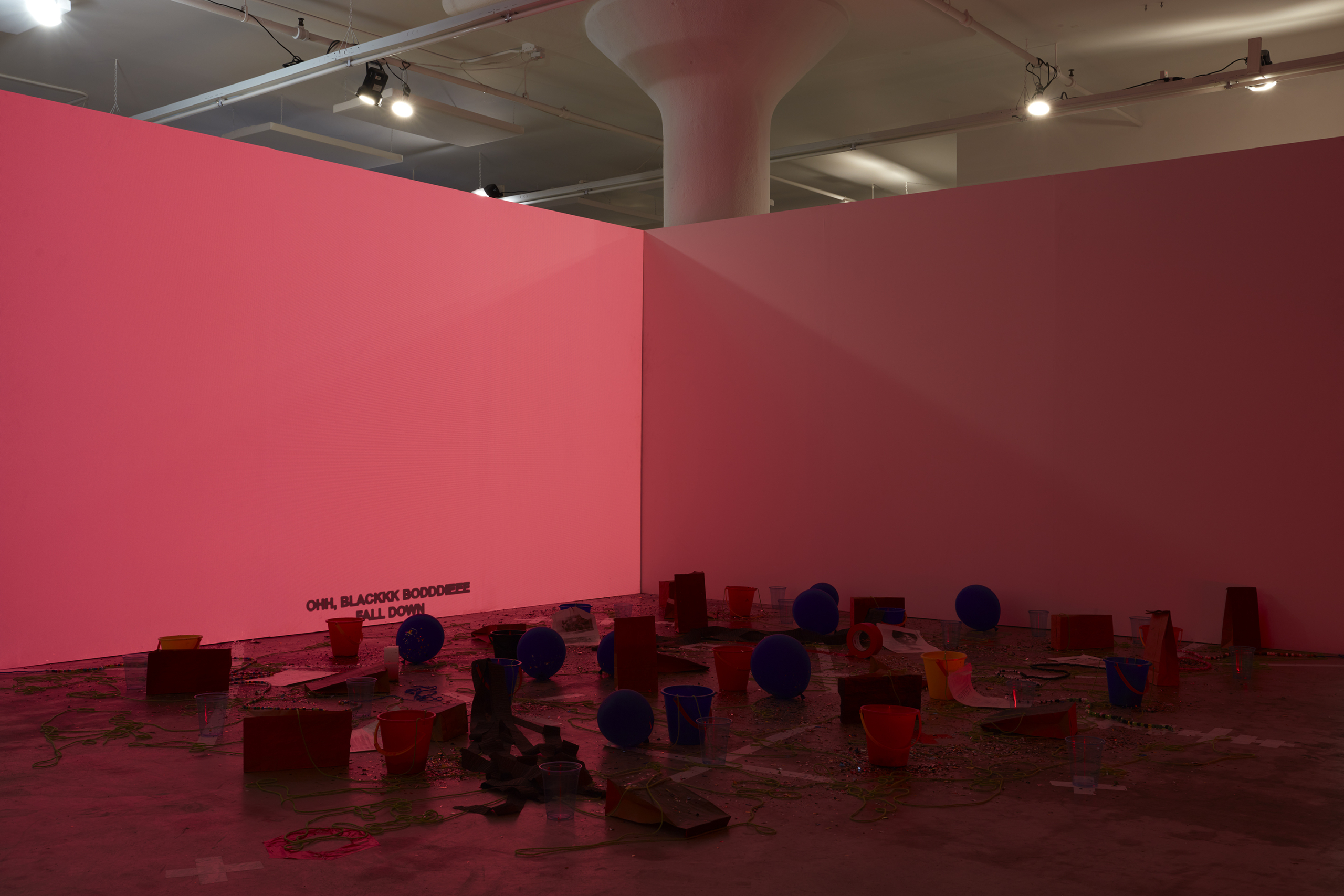
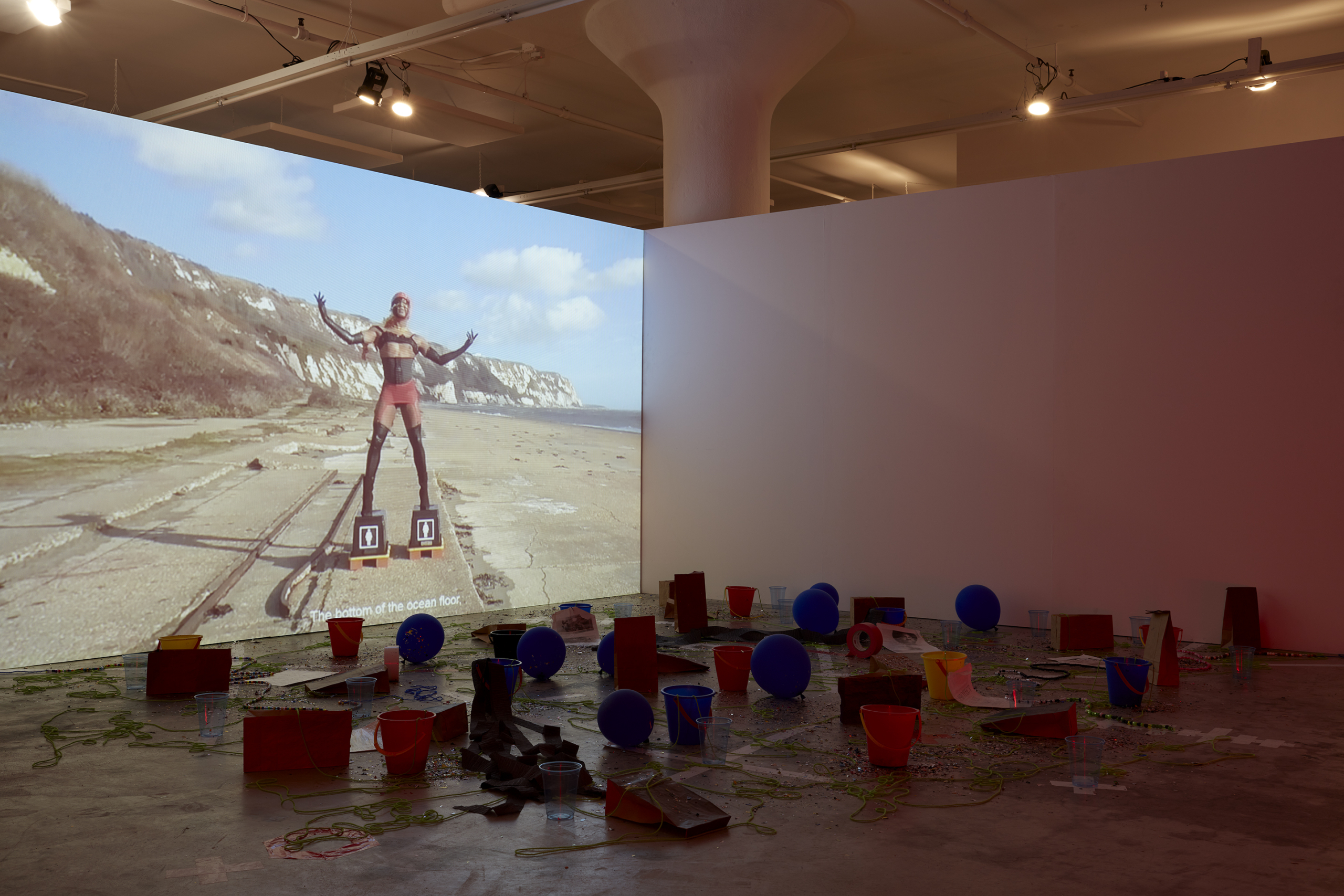
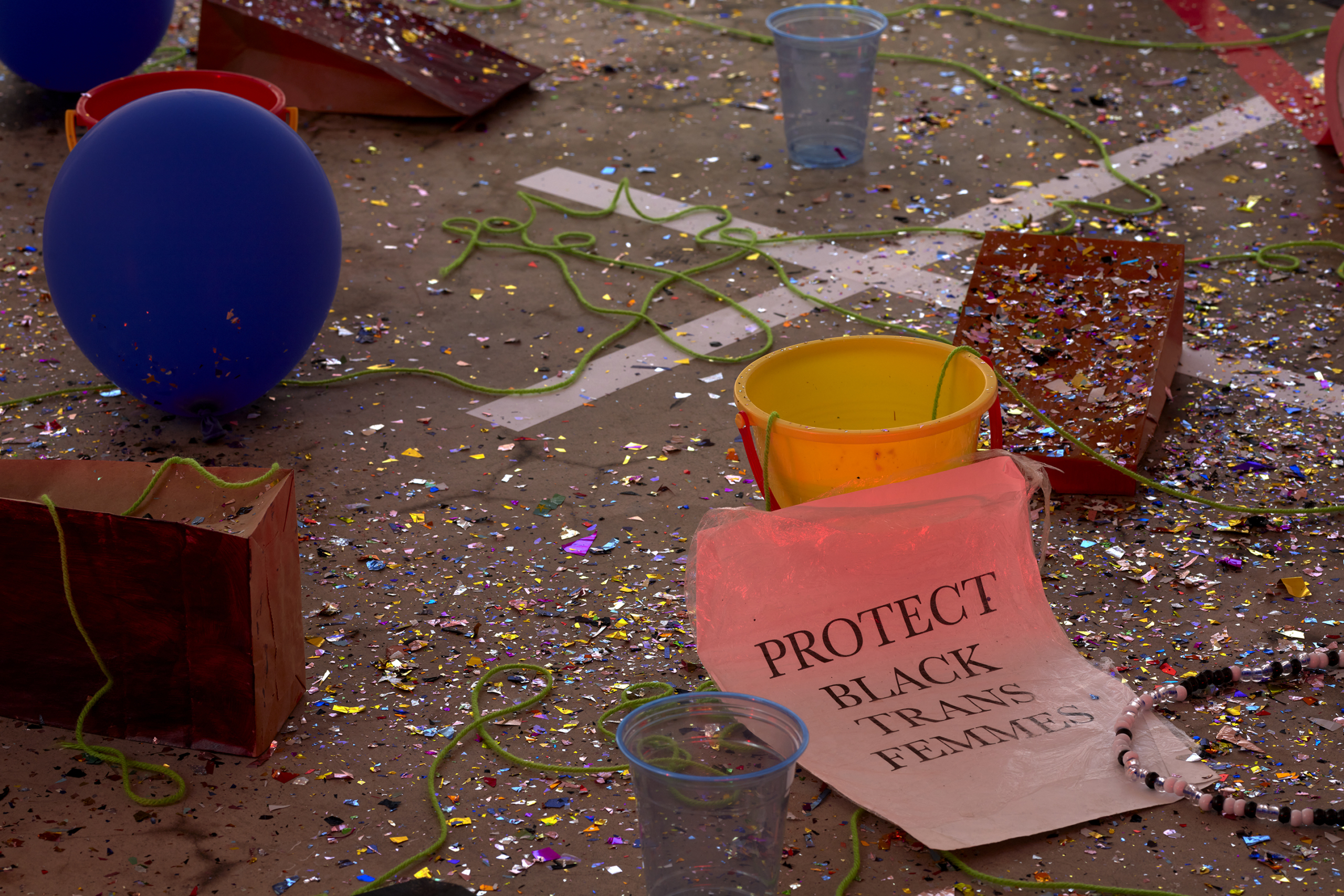

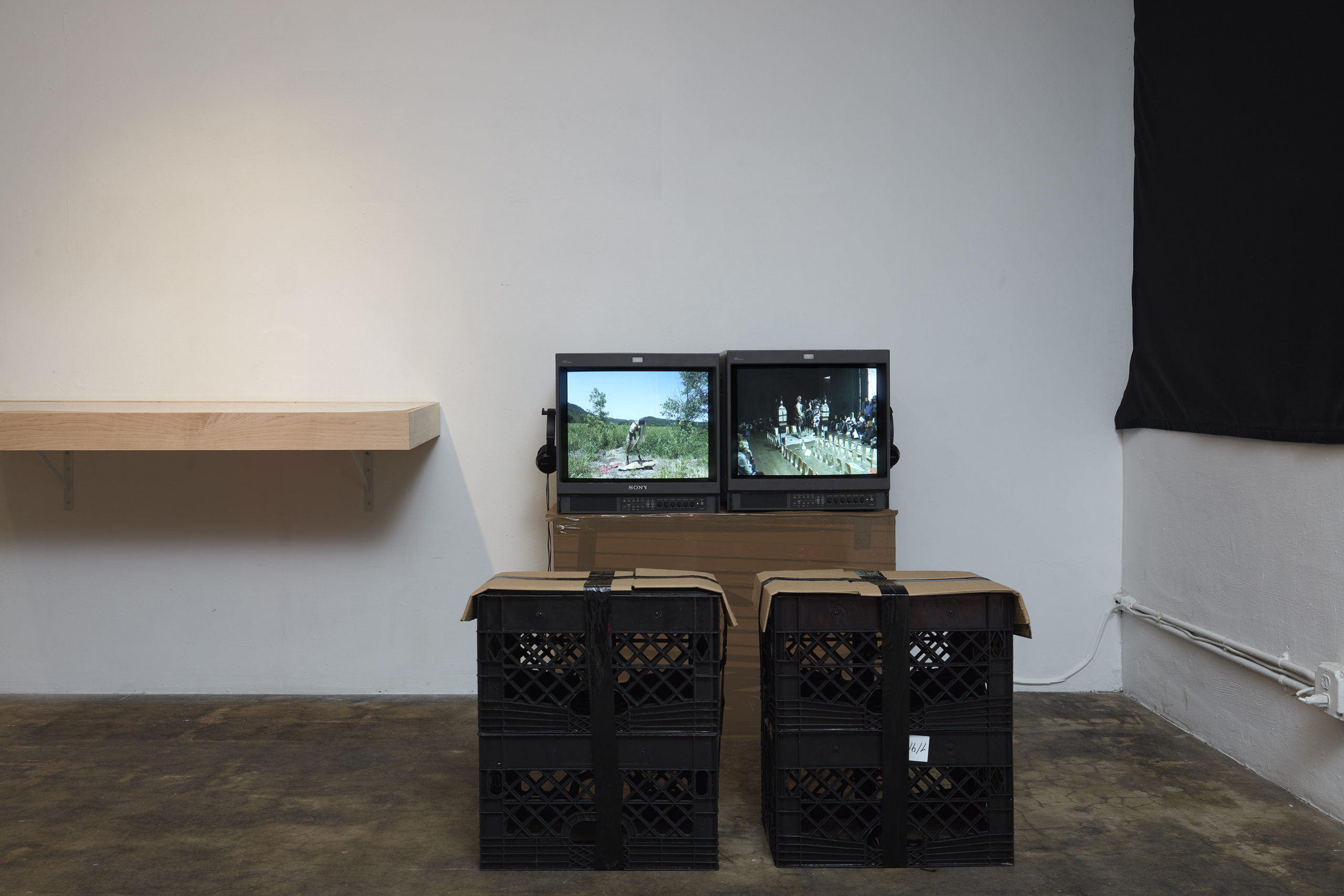
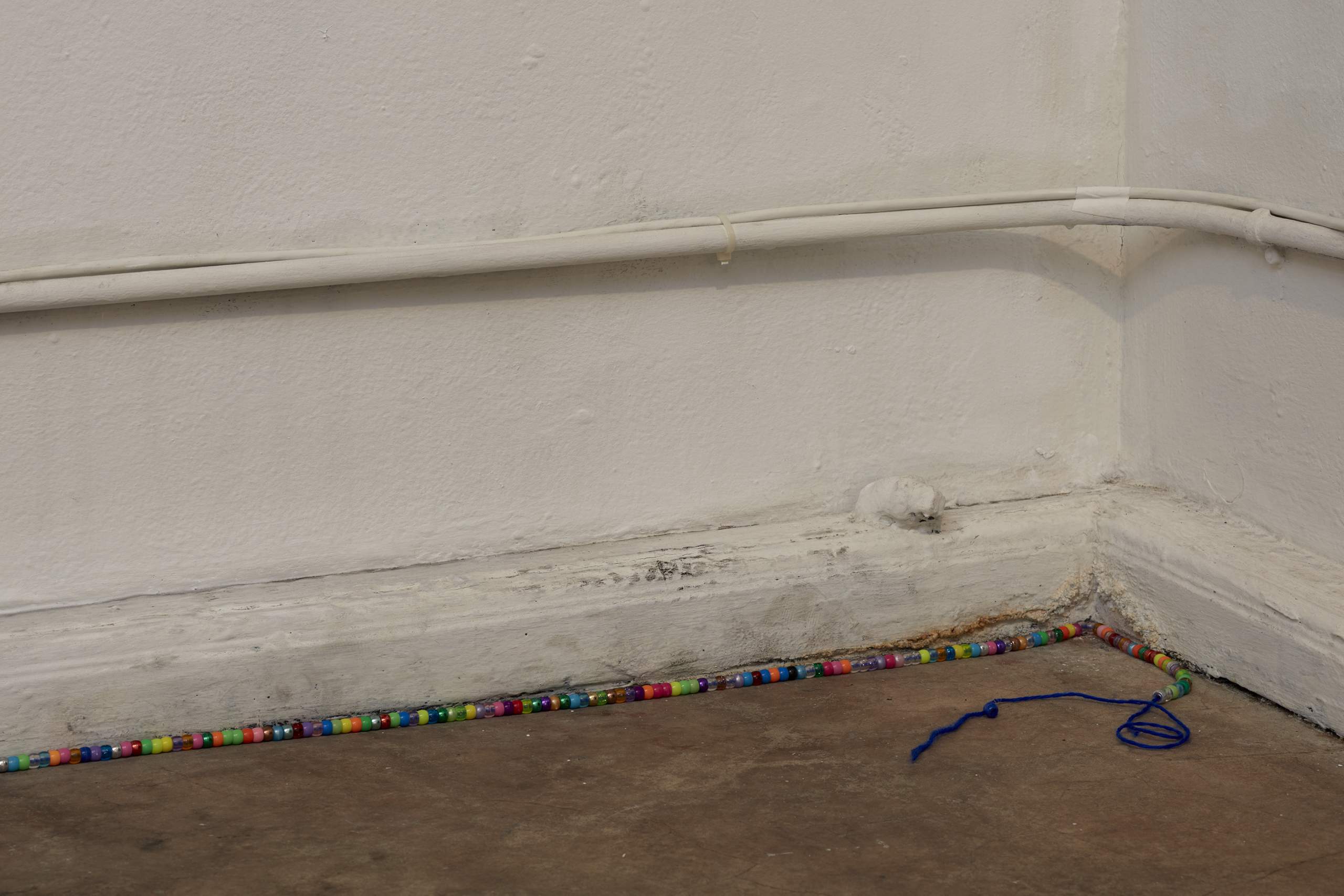
Photos by Evan Walsh.

0